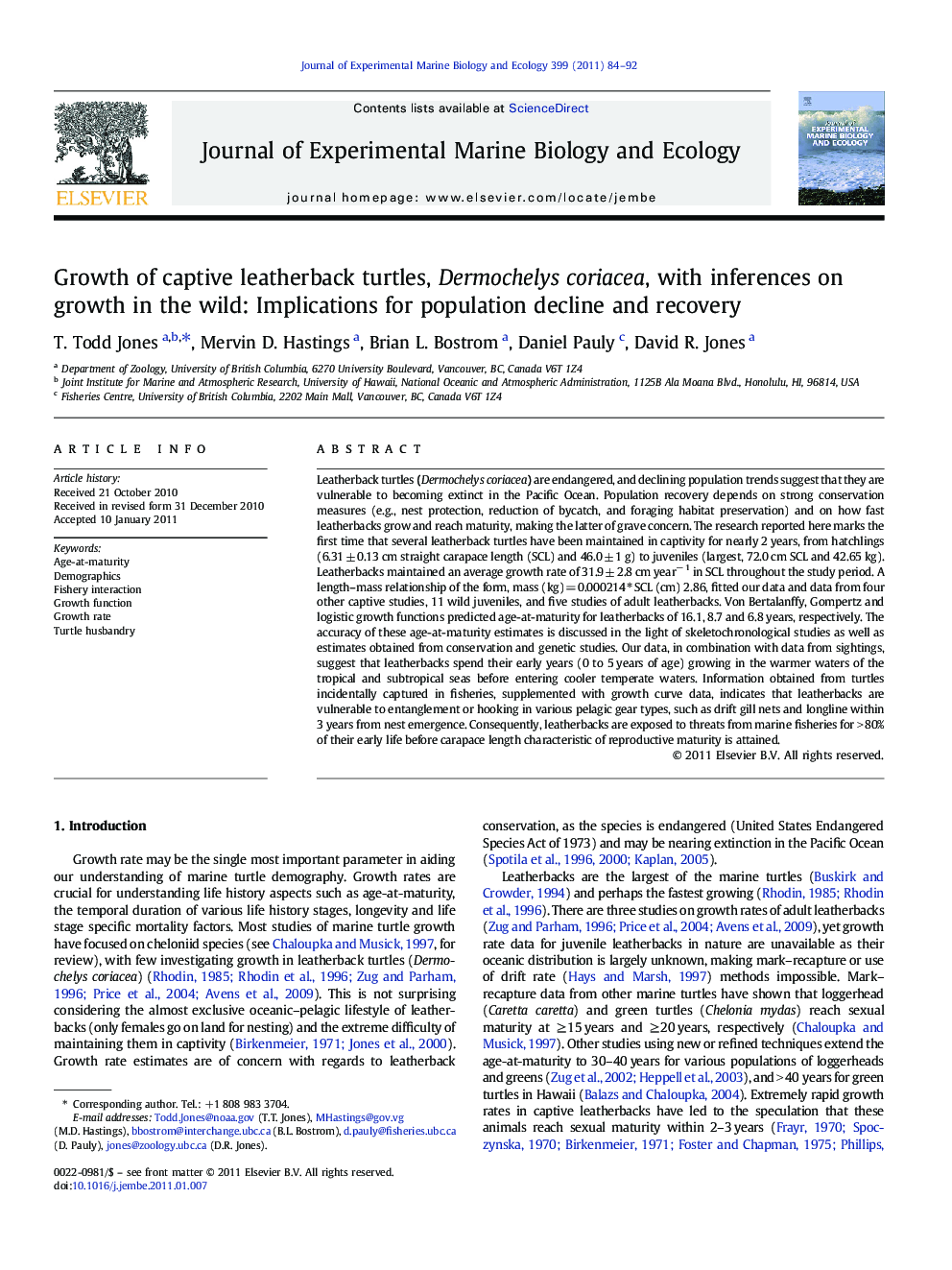| کد مقاله | کد نشریه | سال انتشار | مقاله انگلیسی | نسخه تمام متن |
|---|---|---|---|---|
| 4396446 | 1305824 | 2011 | 9 صفحه PDF | دانلود رایگان |

Leatherback turtles (Dermochelys coriacea) are endangered, and declining population trends suggest that they are vulnerable to becoming extinct in the Pacific Ocean. Population recovery depends on strong conservation measures (e.g., nest protection, reduction of bycatch, and foraging habitat preservation) and on how fast leatherbacks grow and reach maturity, making the latter of grave concern. The research reported here marks the first time that several leatherback turtles have been maintained in captivity for nearly 2 years, from hatchlings (6.31 ± 0.13 cm straight carapace length (SCL) and 46.0 ± 1 g) to juveniles (largest, 72.0 cm SCL and 42.65 kg). Leatherbacks maintained an average growth rate of 31.9 ± 2.8 cm year− 1 in SCL throughout the study period. A length–mass relationship of the form, mass (kg) = 0.000214 ⁎ SCL (cm) 2.86, fitted our data and data from four other captive studies, 11 wild juveniles, and five studies of adult leatherbacks. Von Bertalanffy, Gompertz and logistic growth functions predicted age-at-maturity for leatherbacks of 16.1, 8.7 and 6.8 years, respectively. The accuracy of these age-at-maturity estimates is discussed in the light of skeletochronological studies as well as estimates obtained from conservation and genetic studies. Our data, in combination with data from sightings, suggest that leatherbacks spend their early years (0 to 5 years of age) growing in the warmer waters of the tropical and subtropical seas before entering cooler temperate waters. Information obtained from turtles incidentally captured in fisheries, supplemented with growth curve data, indicates that leatherbacks are vulnerable to entanglement or hooking in various pelagic gear types, such as drift gill nets and longline within 3 years from nest emergence. Consequently, leatherbacks are exposed to threats from marine fisheries for > 80% of their early life before carapace length characteristic of reproductive maturity is attained.
Research Highlights
► Leatherback turtles captive reared from 6 to 72.0 cm SCL.
► Juveniles growth rate averaged 32 cm SCL year− 1 throughout study period.
► Growth functions predicted age-at-maturity for leatherbacks of 16, 9 and 7 years.
► Leatherbacks are vulnerable to fisheries interactions within 3 years from hatching.
Journal: Journal of Experimental Marine Biology and Ecology - Volume 399, Issue 1, 15 March 2011, Pages 84–92